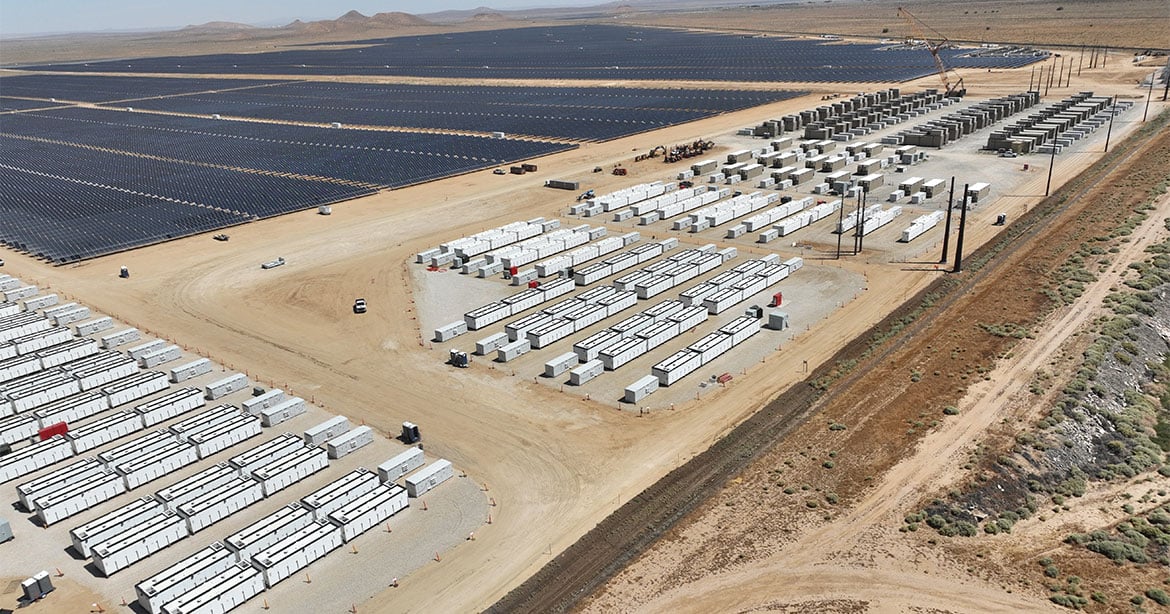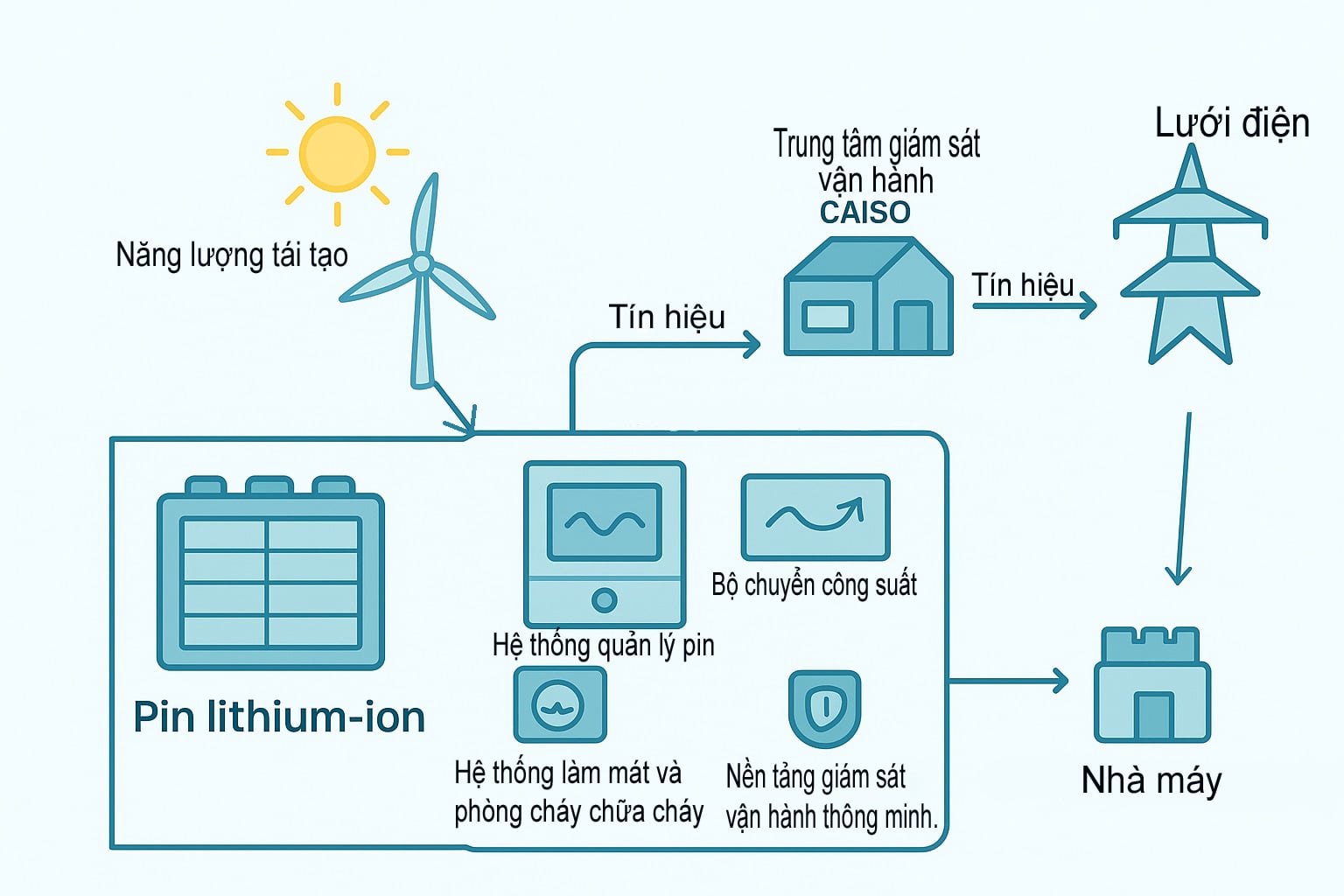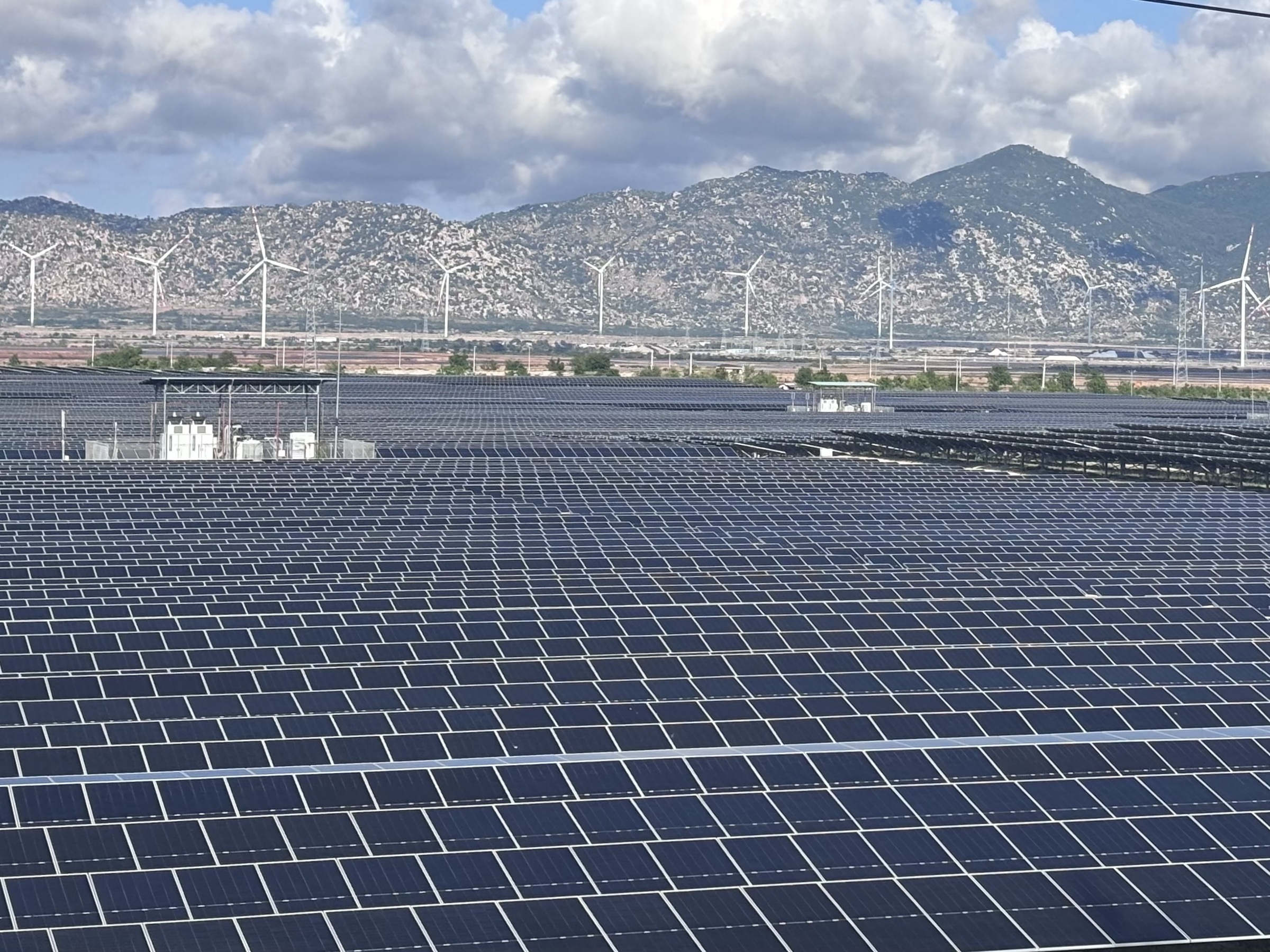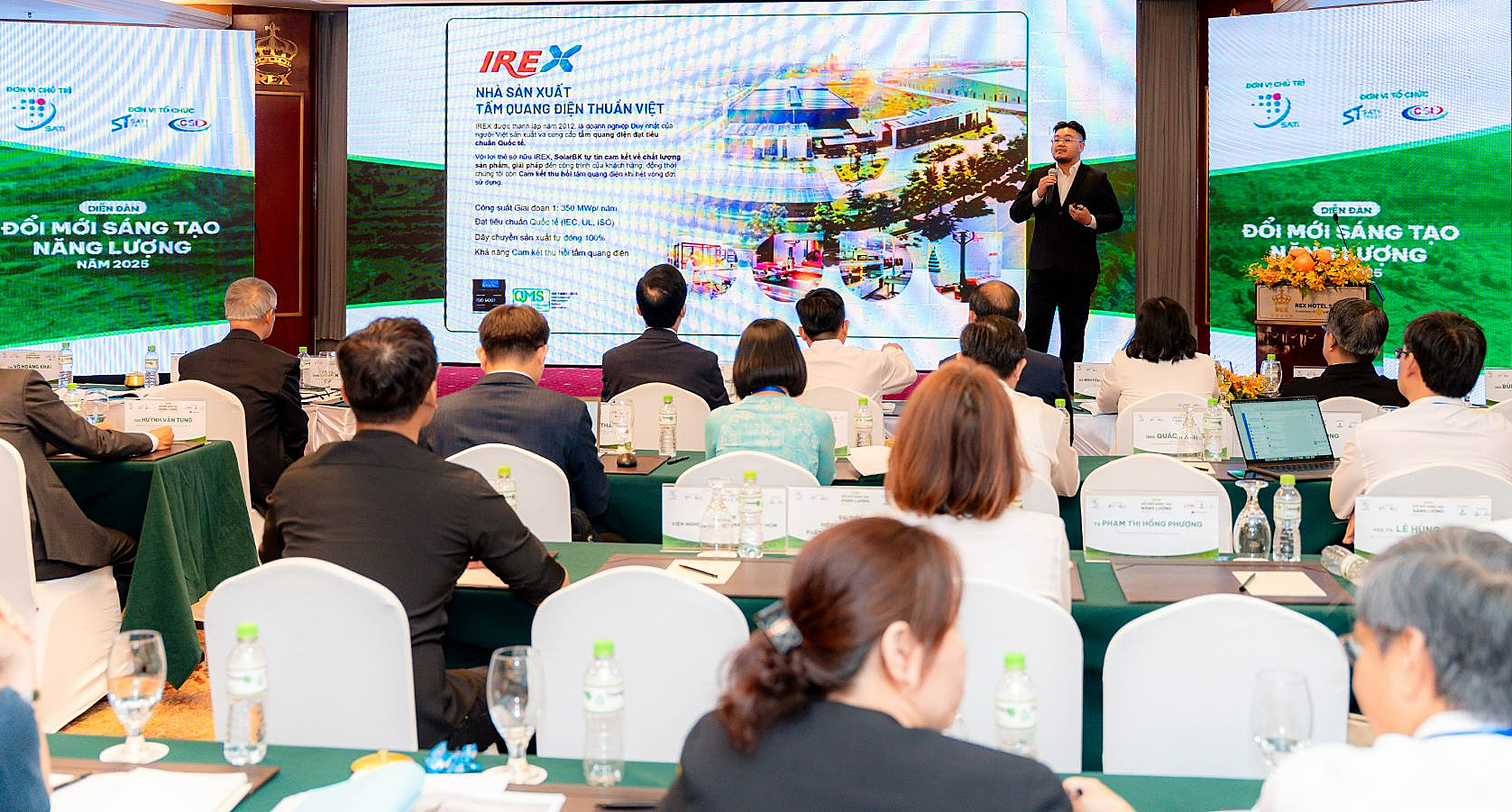A standard BESS comprises lithium-ion battery cabinets, a battery management system (BMS), a power conversion system (PCS, also known as an inverter), a cooling system, fire prevention and suppression equipment, and an intelligent monitoring and operation platform. During operation, the electricity dispatch center detects excess or insufficient capacity on the grid and signals the BESS to charge or discharge accordingly, balancing energy supply and demand.
This model has grown significantly worldwide over the past 5 years, forming a global energy storage industry estimated to reach 114.05 billion USD by 2032.
 |
A solar energy project combined with BESS storage by a company in California (USA). Photo: Thai Anh |
A solar energy project combined with BESS storage by a company in California (USA). Photo: Thai Anh
Depending on the scale of implementation, a BESS can range from a small system for a household to large clusters of hundreds of megawatts.
For example, in the US, households can choose services from energy storage solution providers like Powerwall, Sunrun, or Generac. Upon installation, users receive a lithium-ion battery with a capacity of around 10-15 kWh, along with an inverter, an intelligent controller, and a monitoring app.
During the day, when solar panels generate excess energy, the BESS automatically charges the battery. In the evening or during peak hours, the battery discharges to power household devices. Users can set the discharge mode to automatic or control it manually through the app. Thanks to the inverter, the battery's direct current (DC) electricity is converted to alternating current (AC), synchronizing with the grid.
For large projects, such as the Moss Landing Power Plant (California, USA), the BESS is operated by energy storage companies like Vistra Energy. For the approximately 750 MW/3,000 MWh project, Vistra Energy supplies tens of thousands of lithium-ion battery modules installed in specialized containers, along with cooling, monitoring, and fire protection systems.
Typically, the Moss Landing Power Plant uses electricity directly from the California Independent System Operator (CAISO) grid. The plant also uses electricity from the BESS during periods of high demand.
Vistra Energy's system connects directly to CAISO. During the day, when solar power is in surplus, the monitoring platform within the BESS signals CAISO. CAISO then allows the BESS to absorb and store this energy as DC electricity within the batteries. In the evening, when electricity demand surges and solar production declines, the BESS again signals CAISO. Upon receiving the signal, CAISO allows the PCS within the BESS to convert the stored DC electricity into AC, discharging it back to the CAISO grid at over 750 MW.
The signaling of "excess" or "shortage" of power for CAISO to permit charging or discharging of solar energy is automated and occurs in real-time via intelligent management platforms within the BESS.
 |
Simulation of the operation of a BESS. Graphics: Thai Anh |
Simulation of the operation of a BESS. Graphics: Thai Anh
This model is also being developed in China. The country aims to increase its total BESS capacity to approximately 70 GW by the end of this year, supporting its strategy to increase the proportion of renewable energy, especially wind and solar power.
In Vietnam, some businesses are piloting BESS projects of several tens of megawatts, but the market is still nascent, with low actual mobilization rates. Professor Doctor Le Minh Phuong, Chairman of the Board of Directors of Bach Khoa University and Head of the Power Electronics Research Group, said Vietnam is entering a period of strong energy transition, with solar and wind power development among the highest in the region. The demand for power conversion equipment such as inverters, EV chargers, BESS, and smart grid management devices is booming.
 |
Solar panels and wind turbines at a plant in Khanh Hoa. Photo: Thai Anh |
Solar panels and wind turbines at a plant in Khanh Hoa. Photo: Thai Anh
Ky Quang Minh, CTO of SolarBK, one of the developers of BESS systems, said the average storage cost of the solution is expected to be around 300-400 USD/kWh. This may lead to long payback periods – the biggest barrier to businesses' adoption.
In addition, according to Minh, Vietnamese businesses like SolarBK currently only play the role of integrators, developing management software, and providing solutions suitable for local conditions. Meanwhile, core components like battery cells and inverters still depend on international corporations.
 |
Ky Quang Minh, CTO of SolarBK, introduces the BESS model at the Energy Innovation Forum 2025 on 18/9. Photo: Thai Anh |
Ky Quang Minh, CTO of SolarBK, introduces the BESS model at the Energy Innovation Forum 2025 on 18/9. Photo: Thai Anh
According to the adjusted Power Development Plan VIII approved by the government in April, battery storage solutions are oriented towards development to serve system needs and in combination with renewable energy. They are distributed near wind and solar power sources or within the power system at load centers.
By 2030, the target is to achieve a battery storage capacity of around 10,000-16,300 MW. By 2050, the capacity is expected to expand to 95,983-96,120 MW to match the high proportion of renewable energy.
According to the Asian Development Bank (ADB), renewable energy is growing rapidly in the Asia-Pacific region. The region's renewable energy capacity is expected to increase by nearly 430 GW between 2023 and 2028. With this expansion, BESS is key to ensuring grid stability and optimizing the efficiency of renewable energy.
According to McKinsey's forecast, the BESS market is transforming with potential in various segments, from large storage systems to small household systems. The global BESS market is projected to reach a value of 120 to 150 billion USD by 2030.
Thai Anh












